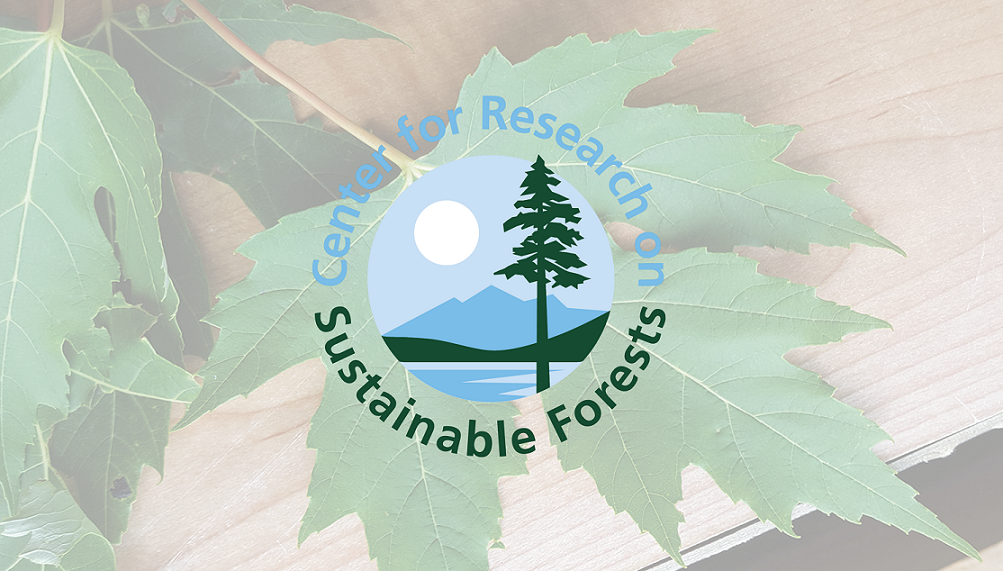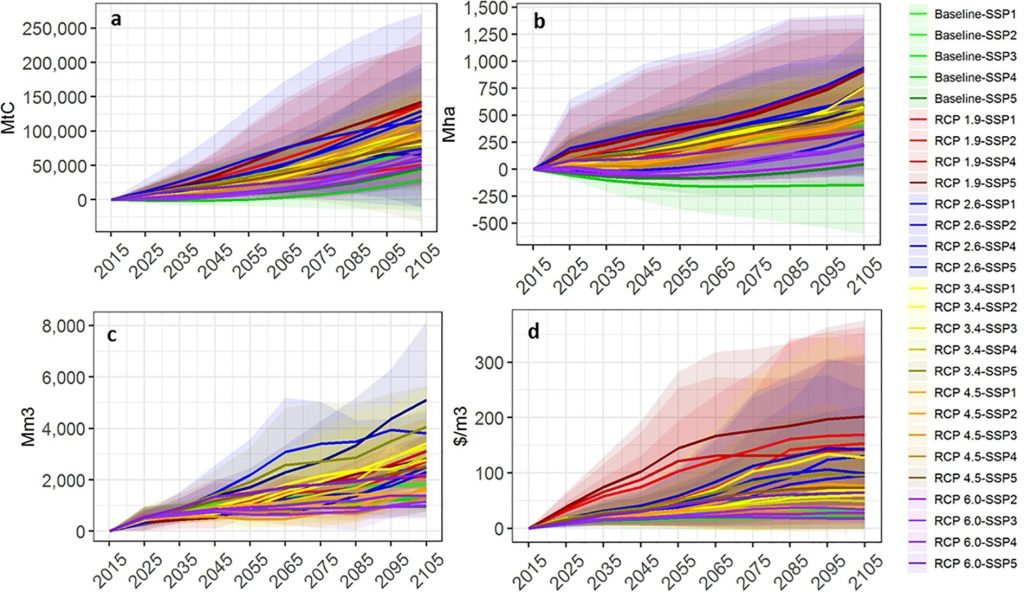
New study shows how global forests play a key role in the future global carbon balance
A new study published in Global Environmental Change by University of Maine Associate Professor of Forest Policy and Economics Adam Daigneault and colleagues from seven institutions develop a first of its kind forest model intercomparison project (ForMIP) to estimate long-term futures for the world’s forests under different socioeconomic and climate mitigation pathways.
Amidst growing recognition of the important contributions of the global forest sector to the carbon cycle and climate change mitigation, the researchers highlight the need to understand the combined impacts of market, management, and policy changes on forest carbon stocks and greenhouse gas emissions. In the article, the authors address key knowledge gaps related to the influence of climate change policies on forest management and timber production; the role of timber demand on land carbon fluxes; and regional trends in forest area, carbon sequestration, and market outcomes.
“Our research highlights the importance of capturing the influence of the socioeconomic drivers of forest management at multiple scales,” noted Dr. Daigneault. “The ForMIP study provides a prime example of how these important drivers of forest regrowth and dynamics can be projected into the future, and the implications that such assumptions have on carbon stocks through 2100.”
Modeling several dozen future socioeconomic and climate policy scenarios across three forest sector models enabled the researchers to offer important insights concerning forest climate mitigation investments and policy design. Their results highlight the contributions that existing forests play in our global carbon balance, and how policy and economic development trends drive both forest management change, forest preservation, and new tree planting.

“A key finding of our research is that economic growth and increased demand for traditional forest products and bioenergy does not necessarily lead to forest carbon loss,” said Dr. Justin Baker of North Carolina State University, a co-author of the study. “Investments in forest management driven by market signals can lead to faster growing forests that can jointly sequester more carbon and provide ample timber supply.”
This paper has direct and immediate policy relevance at both the regional and global scale. ForMIP’s use of high-resolution models of forest ecosystems and markets accurately ascertains the forest sector mitigation potential – a key element of many countries’ commitments to using forests to mitigate climate change. The research helps fill two key gaps: (i) a framework for policy makers to better understand and align national results for goal setting GHG stocktake efforts, and (ii) to better inform global analyses of mitigation possibilities that more adequately reflect forest sector dynamics. “Collectively, this research will enable more rigorous and informed assessments of global and regional mitigation pathways,” said Dr. Daigneault.
Concluding on a hopeful note, the model scenarios indicate a consistent positive trend in forest carbon stocks and timber supply through 2100, reflecting the importance of carbon dynamics on existing forests and the potential gains that can be captured through forest management. The study indicated that global forests could sequester 1.2–5.8 gigatons of carbon dioxide equivalent per year over the next century, thereby offsetting up to 18% of the current global energy emissions.
Contact: Adam Daigneault, adam.daigneault@maine.edu
Daigneault, J.S. Baker, J. Guo, P. Lauri, A. Favero, N. Forsell, C. Johnston, S.B, Ohrel, B. Sohngen. (2022). How the future of the global forest sink depends on timber demand, forest management, and carbon policies. Global Environmental Change 76, 102582. https://doi.org/10.1016/j.gloenvcha.2022.102582
